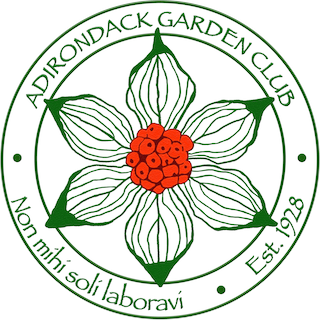Adirondack Garden Club tackles invasive plant problem at Essex Quarry trail
By Tim Rowland
A global study released last week estimated that invasive species were causing the world economy $423 billion a year. I don’t know how many billions of that are directly attributable to the buckthorn, honeysuckle and bittersweet that have taken over the site of an old limestone quarry just south of the town of Essex, but I should think it is considerable.
The quarry was purchased several years ago by Champlain Area Trails and converted into a delightful preserve with trails, cedar forests, a quarry pool and stone benches in thoughtful locations. Stone from the cuts was used for everything from railroad ballast to homes to, according to old newspaper accounts, the Brooklyn Bridge.
The area was once a shallow sea, and fossils there of plants and primitive animals date back more than 400 million years.
At the time, CATS noted the extent to which the invasives had claimed the former industrial site, and reported that the removal of this invasive jungle was both important and exceedingly difficult.
That sounded like a challenge to the Adirondack Garden Club, which as we speak is methodically rooting out the prodigious honeysuckle, buckthorn and bittersweet that choke out native species, harming habitat for wildlife and making a mess of the ecological order. We like to think it’s only fair, since it was probably our great-great grandmothers who brought these “ornamentals” from Europe back in the days before “conservation,” “environmental awareness” and “Keith Richards.”
A buckthorn thicket awaiting destruction. Tim Rowland photo
I happen to be a member of AGC, although being a guy, I think of myself not as a member of a “garden club,” but as a member of the Northern Wilderness Buckthorn Assassins.
You can find us most Fridays at the quarry from 10 a.m. to noon, and we would love to have you join us — just bring bug protection and your favored implements of destruction.
We know it’s an uphill battle, but we do what we can with a battery of medieval looking contraptions that manually uproot saplings, and black plastic “buckthorn bags” that are placed over the stumps of larger buckthorn in the hope they won’t resprout.
We do not use poisons. No material is removed or brought on site. Native seeds and pollinators such as Joe Pye, milkweed and blue-stem goldenrod are being propagated to fill in where the buckthorn and such has been removed. As allies we have the Garden Club of America, which is providing a grant for the work, along with naturalists who help us with plant identification, and stewards from CATS.
It hardly needs to be mentioned that manual removal of invasives is often demanding and not without a unique set of risks, particularly when you are straining every last fiber of your being trying to pull up a clump of particularly stubborn honeysuckle.
Sometimes you will hear a sharp “SNAP” and look up to see that the person at your side whom you were just talking to is missing, the sudden lack of resistance sending them rocketing back through the cedar until you hear a soft thud somewhere aft of your position. This is a garden club, so we do not swear, but sometimes we think things we oughtn’t.
Members of the Adirondack Garden Club and friends get ready to tackle invasives at Essex Quarry. Photo by Tim Rowland
But there is easier work too, such as tweezing tiny little baby buckthorns, thousands of them, from the damp earth before they develop a deep and problematic root system.
I should mention in passing that this work has imprinted upon me a deep, psychotic hatred of buckthorn in particular, which was brought to these shores, on purpose, as an ornamental shrub. The prickly buckthorn doesn’t reach tree status in terms of width, but they grow disturbingly tall, their tendrils weaving their way into the canopy to the point where no amount of force can bring them down even after they’ve been cut. And when you cut one, 700 show up in its place, sprouting from the stump with a revenge-like frenzy that’s as impressive as it is discouraging.
Certainly, there are parts of this property where the invasives are so thick we’re not sure if/how we can whip them into submission. But we are establishing a beachhead, and already the results have been worth it. Naturalists have found a rare sedge on the grounds, and a charming little pond was discovered behind a curtain of buckthorn and honeysuckle so thick that visibility had been reduced down to zero.
The fun of it is that there is such a rewarding before/after view of the landscape once the brush has been cleared away. The Essex Quarry Preserve is getting prettier by the week. The surroundings and company are pleasant too, and in a world full of frustrations, there is nothing more fitting and productive to take them out on than buckthorn.
